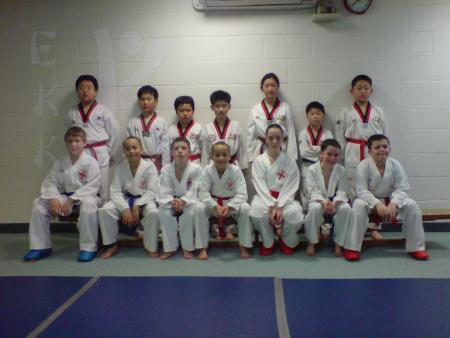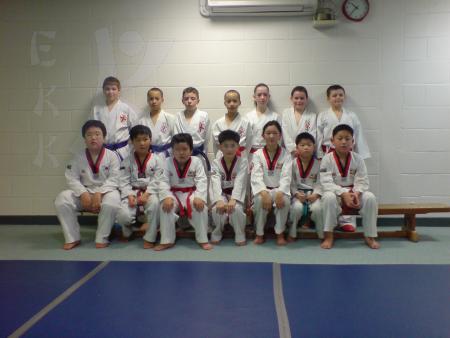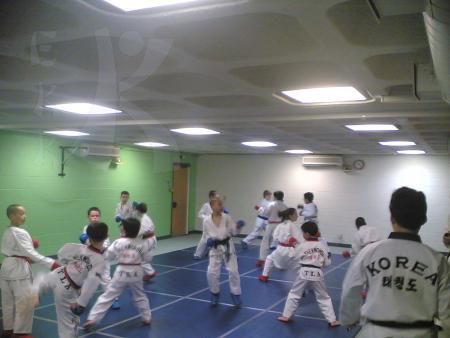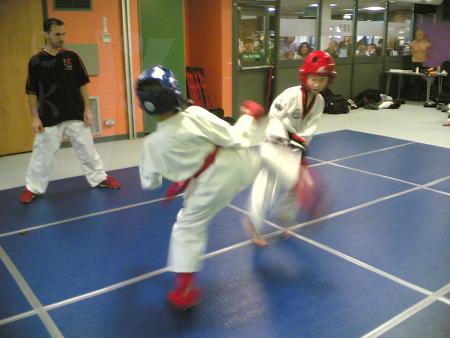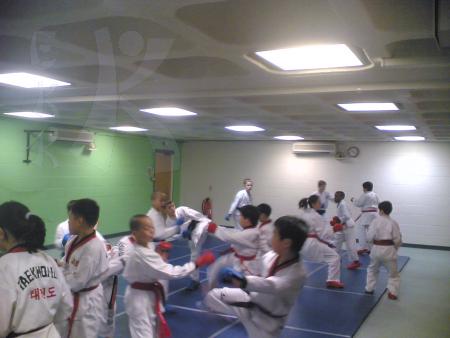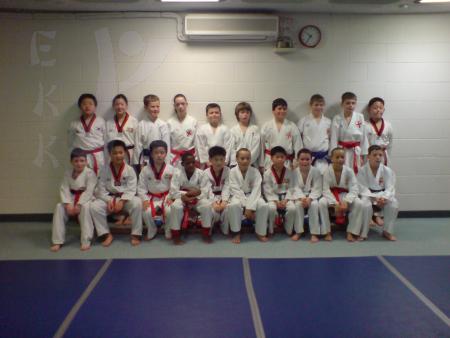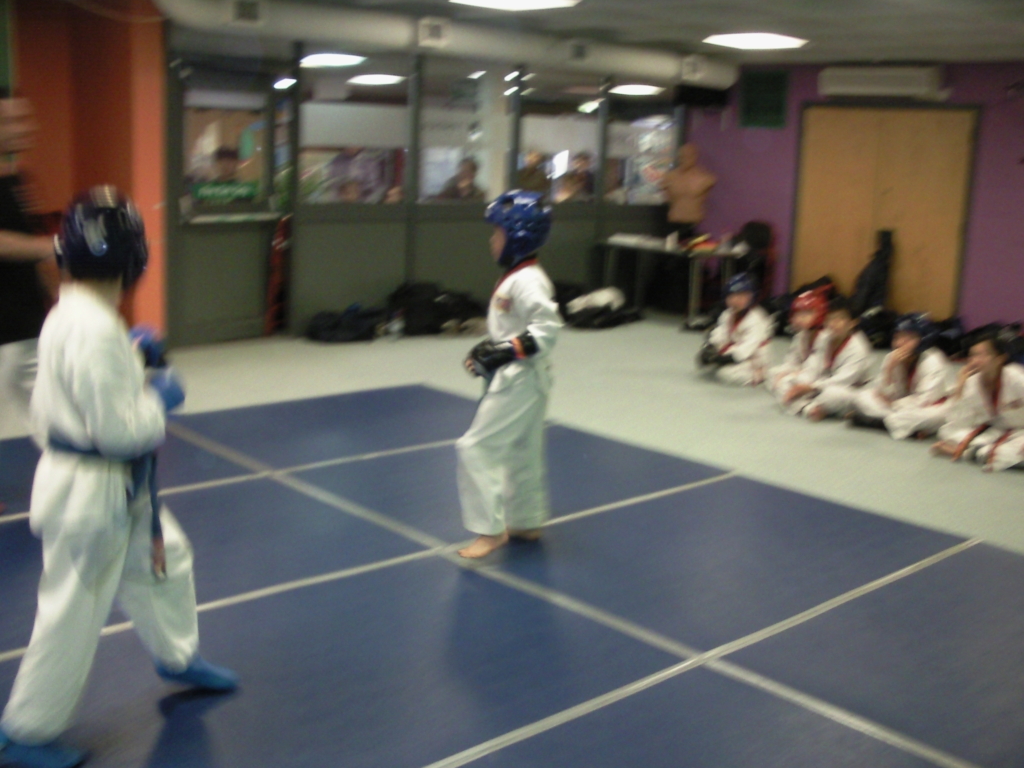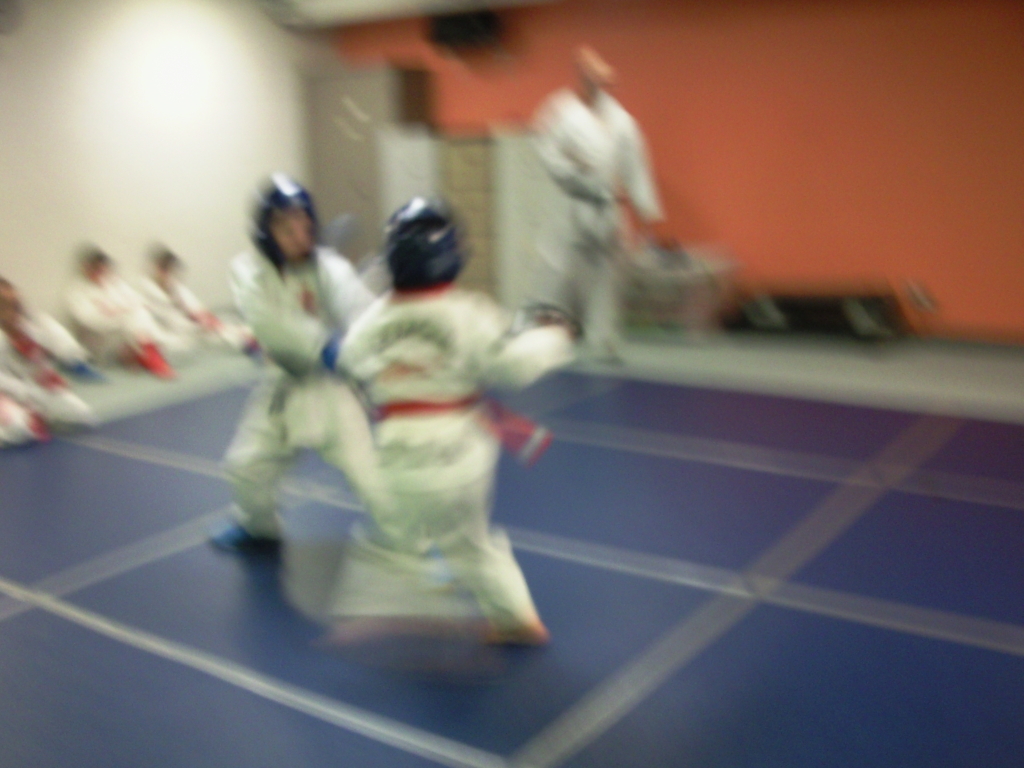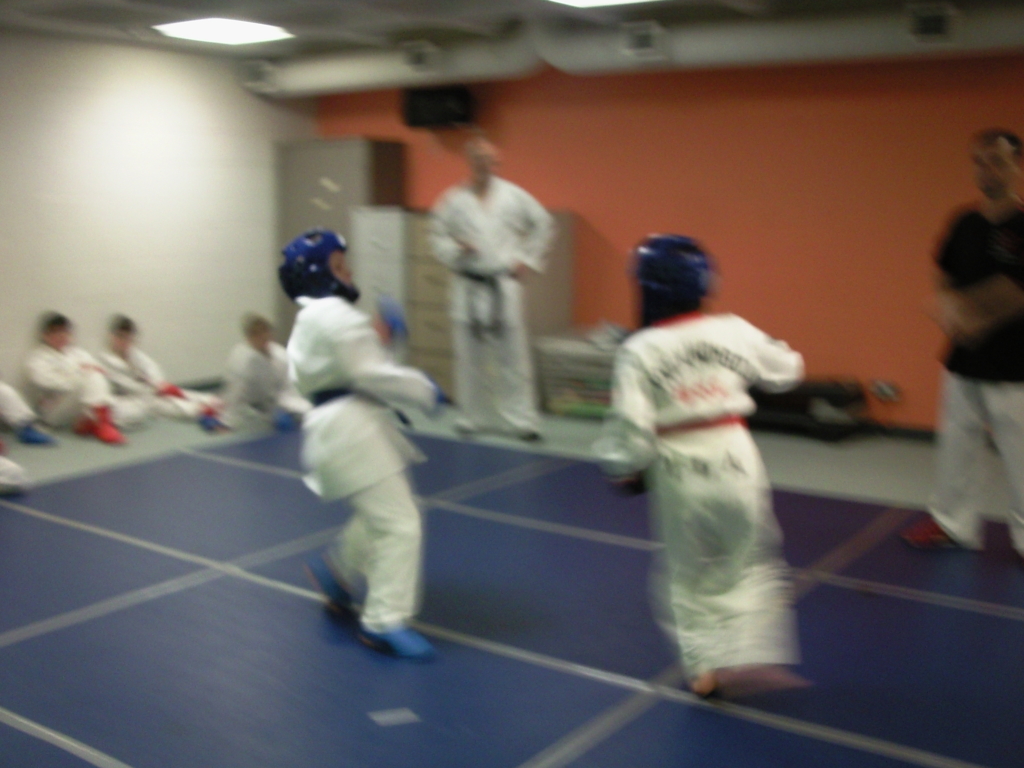The Origin of Poomsae
The Taekwondo poomsaes are so designed to cope collectively with the outside threats in that society has already developed into an organized group, weakening the necessity of solitary individual defense measures. For the constituents of community, the practice and transmission of techniques should be convenient and less complicated. In that sense, the poomsae has been gradually systematized through practical experiences togther with the help of philosophical and medical sciences.
It is believed that in ancient times the poomsae was practiced among the ruling class and the first poomsae pattern appearing in the documents or monuments was around the first century, when Koguryo reined the Han (Korean) race.
Definition of Poomsae
Each poom of the poomsae has been inherited through a long history of about 5,000 years, finally as a product of scientific technique formulated on the basis of the traditional national spirit and practical experiments. From the technical viewpoint, the poomsae itself is Taekwondo, and the basic movements are no more than the preliminary actions to reach the poomsae. The Kyorugi is a practical application of the poomsae and the Taekwondo spirit is manifested not in an abstract mental philosophy expressed in the documents but in the actions of poomsae. Then, what is the Taekwondo poomsae? The poomsae is the style of conduct which expresses directly or indirectly mental and physical refinements as well as the principles of offense and defense resulting from cultivation of Taekwondo spirit and techniques.
Significance of Poomsae
The poomsae is a series of movements for offense and defense techniques which can be practiced and trained, even without presence of an instructor, in accordance with the fixed patterns. Therefore, the poomsae has the merits, by its practice, to make the trainee enhance the Kyorugi techniques and applied techniques including special techniques which can hardly be practiced by the training of each separate basic movement alone.
The poomsae can be trained along the imaginary or drawn poomsae line, which marks the position of foot and the line direction to move along.
Considerations for Training Poomsae
The poomsae is a series of alternate attack and defense actions : therefore, there are frequent changes of actions and connections of techniques. One must pay attention to the movement of body, eyes, respiration, etc. The steps of paying attention are as follow :
1)i A complete understanding of the significance of poomsae and the principles of its composition.
2) A perfect memorization of the poomsae line, movements and direction.
3) During the practice, the following must be taken into consideration :
(a) The eyes
(b) Movement of the center of balance
(c) Low or high speed
(d) Strong or weak force
(e) Respiration
Training of Poomsae
A completion of poomsae can be achieved through hard training following the 5 steps :
(1) Pattern
The first step of training poomsae is to learn the pattern. Concentration of spirit, eyes, angles of movements must be emphasized in addition to the accuracy of actions.
(2) Significance
In the next step, the emphasis must be laid on the balance, strength and weakness, low or high speed, respiration and poomsae line. The significance of movements, connection of pooms and the complete poomsae must be learned correctly.
(3) Practical Use
One must adapt what he has learned to his practical use, finding out the practicability.
(4) Self Style
One must evaluate his findings about the effectiveness of what he has learned, comparing with his bodily structure, speed, strength, muscle strength, impulsive power, points of emphasis in training, etc., and moderate the techniques into his own style.
(5) Completion
One achieves a synthetic accomplishment of poomsae training by mastering the art of Taekwondo techniques including Taekwondo spirit.
Categories of Poomsae
The poomsae are categorized by the technique, composition and points of stress, which are classified each into 3 minor breakdowns.
(1) Technique
The technique means the technical patterns of the entire poomsae. The essence of Taekwondo is the martial art ; therefore, the categorization of practicable patterns of techniques is important.
a. Poomsae containing various techniques : This contains more techniques of chagi and makki than are needed for practical use. Practicable techniques must be selected among them in the course of training.
b. Poomsae containing practicable techniques : This includes practically used techniques only, which are classified into a series of chigi techniques, a series of makki techniques and a balanced combination of chigi and makki techniques.
c. Poomsae containing simple techniques : This is classified into the basic course and the advanced course, in the advanced course, the training of cultivating the inner strength of body by means of controlling the respiration is included. The variations of techniques should be mastered through hard training.
(2) Composition
The composition of poomsae movements is differentiated according to the proportion of poom and technique, hand techniques and foot techniques, and seogi and its moving directions. Except for certain special cases, the poomsae movements are equally distributed among all parts of the body symmetrically between fore and back and between left and right. Therefore, the proportion of foot techniques and hand techniques is the criteria to decide the composition of poomsae movements.
a. Poomsae with the priority on hand techniques
b. Poomsae with the priority on foot techniques
c. Poomsae in which hand techniques and foot techniques are evenly distributed.
(3) Points of Stress
The poomsae is also classified by the extent of emphasis in favor of either strength or softness and of either a slow movement or a fast movement. Strong but slow movements and speedy but soft movements are included in the similar categories.
a. Strong but slow poomsae
b. Weak but speedy poomsae
c. Poomsae well balanced in strength and weakness as well as in slowness and speediness.
However, the above methods of categorization are not absolute for the advanced course of training.
Classification of Poomsae
Taegeuk poomsaes from 1(il) jang to 8(pal) jang are classified as Kup grader's poomsaes and the poomsaes from Koryo up to Ilyo as Dan-grader's, i.e., black-belter's poomsaes. The poomsaes consists of basic movements and poom and they are so arranged to fit the frame of movement direction, which is called the poomsae line. The poomsae lines are described after symbols or Chinese characters.
Types of Poomsae Lines
1) Taegeuk poomsae : This consists of 8 patterns symbolizing the 8 divination signs(bars) in the Oriental science of divination, and it is generally expressed by a Chinese character, meaning a king.
2) Koryo poomsae : the shape of a Chinese character, meaning a learned man.
3) Keumgang poomsae : a Chinese character, meaning a mountain (Mt. Diamond)
4) Taebaek poomsae : a Chinese character, meaning an artisan.
5) Pyongwon poomsae : a Chinese character, meaning one.
6) Sipjin poomsae : a Chinese character, meaning ten.
7) Jitae poomsae : the shape of a Korean vowel, sounding "oh"
8) Chonkwon poomsae : the shape of a Korean vowel, sounding "wu"
9) Hansu poomsae : a Chinese character, meaning water.
10) Ilyo poomsae : the shape of a reversed swastika sign.
